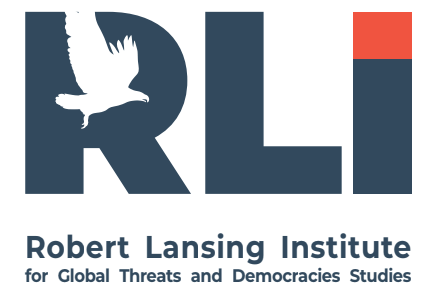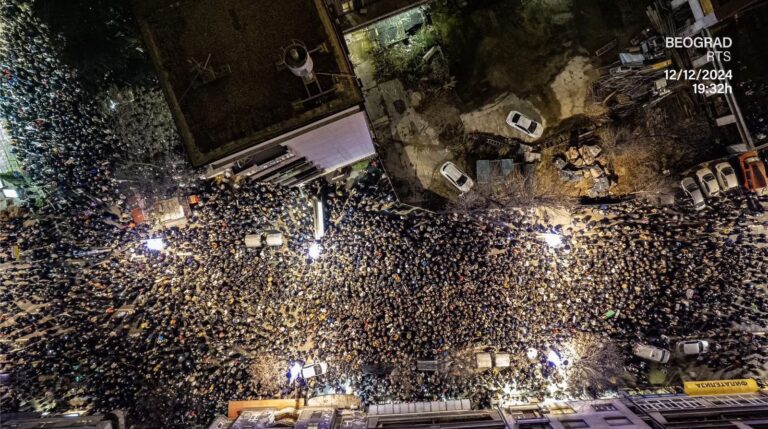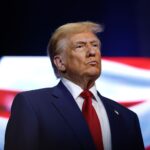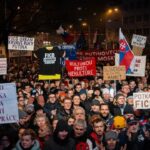Serbian President Aleksandar Vucic has faced numerous mass protests during his rule, but the recent demonstrations in Belgrade stand out as the largest and most persistent since the ouster of Slobodan Milosevic. These protests highlight widespread dissatisfaction with Vucic’s increasingly autocratic governance. It is worth noting that Vucic began his political career as Minister of Information under Milosevic’s regime during the Yugoslav wars, positioning himself as a successor to the controversial leader.
While Vucic publicly advocates for Serbia’s membership in the European Union, his administration faces accusations of aligning more closely with Russia and China, undermining democratic freedoms, and eroding political transparency. In response to growing unrest, Vucic’s government has employed tactics such as arrests, intimidation, and violence to suppress dissent.
The current wave of protests, sparked by the collapse of a newly renovated train station roof in Novi Sad, which killed 15 people, including children, has brought tens of thousands of citizens to the streets of Belgrade and other cities. The tragedy, seen as a symbol of government corruption and mismanagement, mobilized students, opposition leaders, and dissatisfied citizens alike. Protesters have blocked roads for over two months, chanting slogans like “Vucic go away,” “Danjel Vucic involved in crime,” and “We want justice.” A red handprint has become the emblem of the movement, symbolizing the belief that the government has “blood on its hands.”
The Novi Sad railway station had been renovated twice as part of a Chinese-led modernization of Serbia’s railway infrastructure, funded under China’s Belt and Road Initiative. The reconstruction, touted as being completed to European standards, began in 2021 and was declared finished in 2024. Despite this, critics argue that corruption and nepotism within the government led to substandard construction, culminating in the deadly collapse. While the Prosecutor’s Office has indicted 13 individuals for the incident, critics claim the charges lack a financial investigation into possible corruption.
Vucic and senior government officials have accused protesters of attempting to “overthrow the government,” labeling them as “foreign mercenaries,” “violators,” and “street hooligans.” In an effort to undermine the protests, Vucic has reportedly used Serbia’s intelligence agency (BIA) to intimidate protesters and their families through so-called “friendly talks.” At the same time, another strategy appears to be in play: shifting the protests toward a nationalist agenda. Government-aligned operatives have allegedly infiltrated demonstrations, waving flags with nationalist symbols and chanting slogans such as “Kosovo is Serbia” and “We will not surrender.”
The protests have become a battleground for Serbia’s future, with students demanding justice, transparency, and accountability, while the government seeks to discredit and divide the movement. Whether this unrest will lead to meaningful political change or be co-opted into a nationalist narrative remains uncertain.
Although it may seem that the collective silence against Vucic has finally broken and there is no turning back this time, the protest risks being manipulated by Vucic’s government. It could potentially be transformed into a nationalist movement that serves his agenda, allowing him to secure yet another election victory. Since most media outlets in Serbia are either state-controlled or owned by oligarchs tied to the ruling SNS party and Vucic’s inner circle, the coverage overwhelmingly favors Vucic. This coverage often includes nationalist themes, emphasizing Serbia’s “fraternal friendship” with Russia and its close ties with China. Vucic is well aware that over 80% of Serbian citizens rely on local media for information, as access to reliable international media is limited, because the majority—around 80%—have little to no knowledge of English. He exploits this situation to manipulate the narrative and turn the protests to his advantage.
The ongoing protests in Serbia encapsulate a critical moment in the nation’s political history. They represent both a challenge to the entrenched power of Aleksandar Vucic’s regime and a test of the people’s ability to resist manipulation and maintain focus on their demands for justice and reform. Whether the protests succeed in achieving systemic change or are diverted into serving nationalist objectives remains to be seen. However, they highlight the deep frustrations of a society grappling with corruption, a controlled media landscape, and a fragile democratic framework. The coming months will determine if these demonstrations mark the beginning of genuine transformation or simply another chapter in Serbia’s struggle for accountability and freedom. The outcome of these protests will not only determine the future of Vucic’s regime but also set the tone for Serbia’s path towards EU or Russia. Will the movement succeed in achieving political reform and justice, or will it be derailed by government manipulation and nationalist rhetoric? The resilience of the protesters and their ability to maintain unity in the face of intimidation and co-optation will be crucial. As Serbia stands at this crossroads, the broader struggle reflects a deep-seated demand for accountability, transparency, and a departure from the legacy of corruption and authoritarianism that has long plagued its political landscape.




